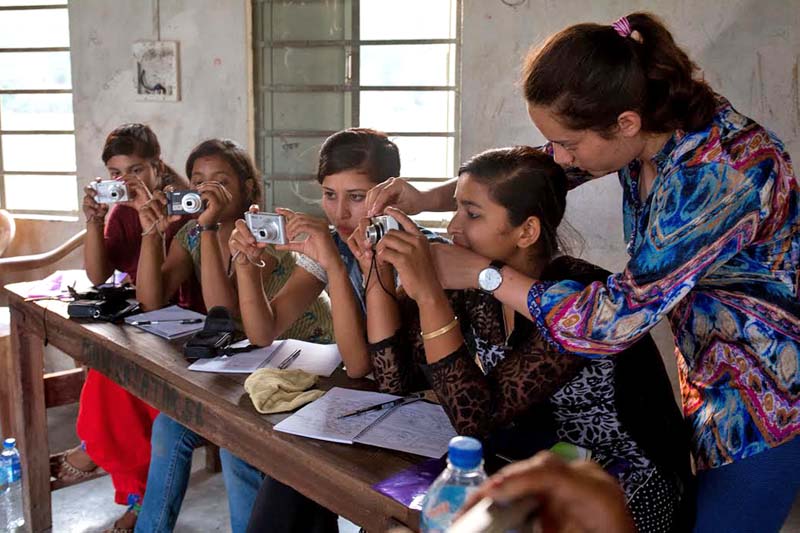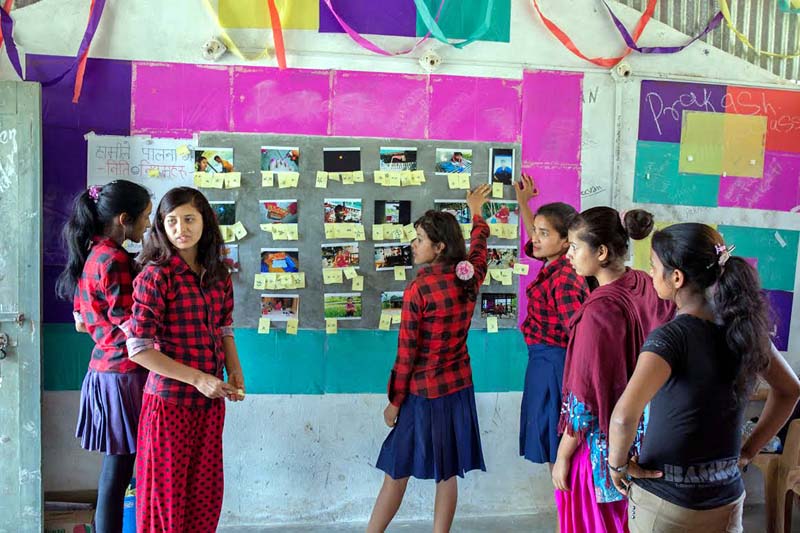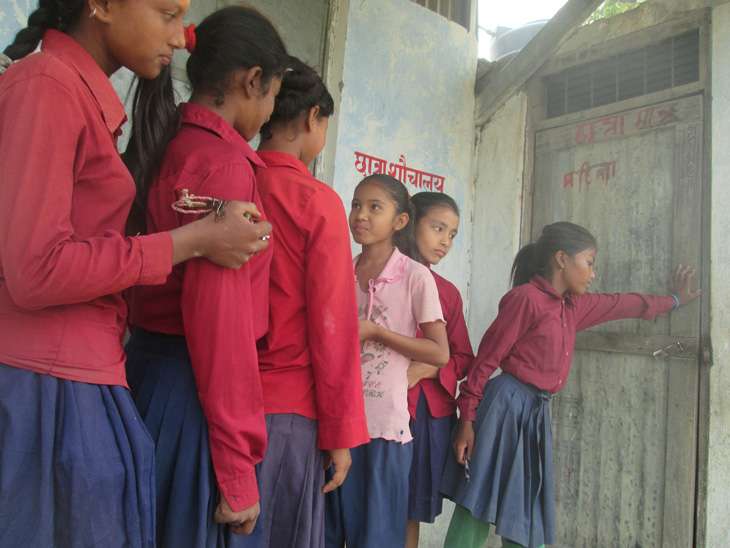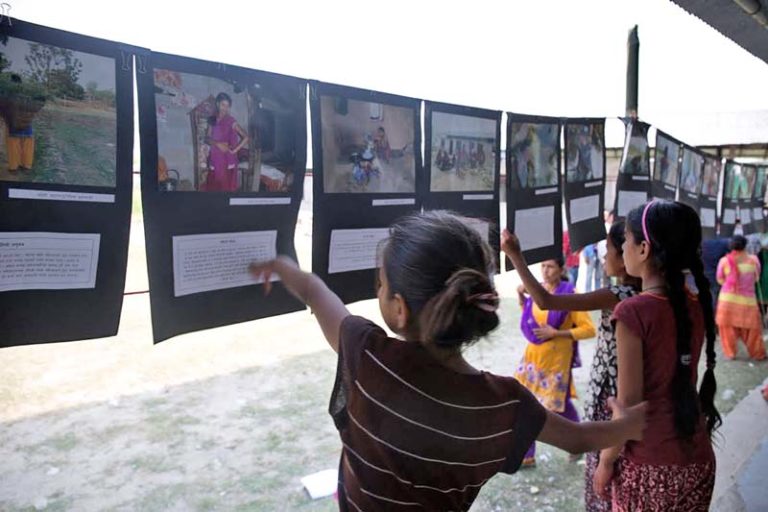Photovoice: An Empowering Process for Social Change
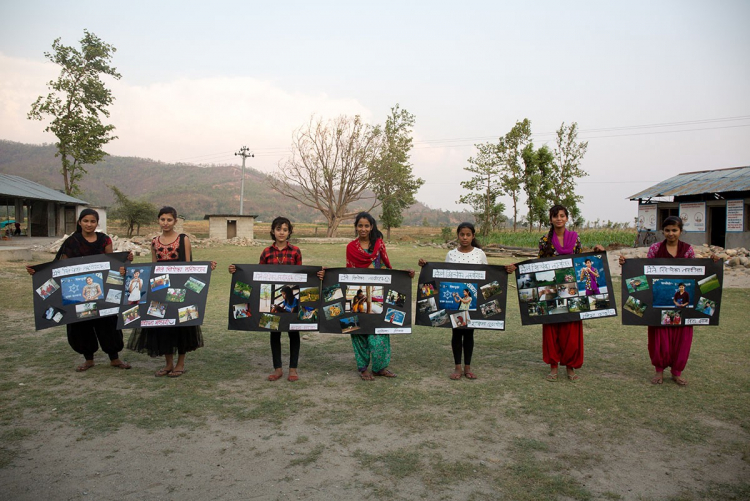
When Manisha got her period for the first time, she was taken to a neighbor’s house, was forbidden to attend school, enter the kitchen, touch flowers or vegetables, and prohibited to touch her brothers and father. She was told she had become “impure” because she was on her period.
Sounds harsh right? This is a story many girls and women like Manisha in Nepal can reckon with as they suffer from varying degrees of discrimination, assorted restrictions, and isolation within their own family because of menstruation.
A UNICEF study shows that menstruation in Nepal holds a real stigma among girls and women. The customary practice is even more extreme in rural areas where poverty, illiteracy, and gender inequality are prevalent. A UNICEF report on menstrual hygiene analysis on Nepal revealed that almost 30 percent of girls in Nepal miss school during menstruation, a leading factor contributing to school dropouts.
Restless Development, an NGO working toward the abolishment of chhaupadi, states, “Even worse is the plight of dying women as they are banished out of their homes to 'chhaupadi ' huts every month despite being criminalized by the government.”
To fight this systemic patriarchy, participatory photography or “photovoice” has become an impactful medium for raising awareness and creating social change regarding issues of menstruation in Nepal. According to the Global Health Institute, Wang and Burris define photovoice as “a participatory process whereby people use photography as a tool to identify, represent and deconstruct social problems in their community.”
Having contributed to the photovoice pilot project led by WaterAid Nepal, I saw the chain of change emerging from the grassroots. In this regard, photovoice sets an exemplary tone for the importance of community engagement and, participation referred to the bottom-up approach in the developmental sphere that is dominantly top-down as outlined in the European Network for Rural Development.
During the month-long engagement with young girls from the community, I witnessed the change starting from a young girl, eventually influencing her family, social circle, and the community at large. This process of change was a result of the participatory approach that enabled her to normalize the conversation around menstruation with the help of photography.
The use of cameras as a tool allowed girls to engage with technology, express their feelings and emotions through photography, and to reflect on it.
Participants learning technicalities of camera/ Image credit: WaterAid/Mani Karmacharya
Photovoice, a UK based charity, highlights the impact of participatory photography as a tool for empowerment, promotion of community engagement, and social change through their global projects on women empowerment, sustainable farming, and other diverse social issues related to human rights and social justice. Adhering to the same principles, the replication of participatory photography over the years has brought about positive and attainable changes in Nepal.
In my interview with Senior Communications Officer of WaterAid Nepal, Mani Karmacharya said,
“Photovoice has been an incredible process in changing the attitude of girls towards menstruation and their hygiene behavior. Definitely, it has become an important medium to strike an open and meaningful conversation around the issue of menstruation as it holds a serious taboo in our society. The holistic process that girls go through from capturing an image, selecting them and eventually writing photo stories- every step of it aids in the empowerment process and enriches their decision-making skills. It is evident enough that the process has instilled a lot of confidence among girls and has enabled them to become a change-maker in the society.”
Photo selection process/ Image Credit: WaterAid/Mani Karmacharya
Sushma, one of the participants, documented the problems girls faced in the absence of girl friendly toilets at her school. Through her photographs, she highlighted the need for a well-equipped latrine to follow a hygienic routine, especially during menstruation. She also indicated the need for such infrastructure to increase the attendance of girls in her school. Through her powerful photographs, she managed to garner the attention of her teachers, especially her Principle, which led to a significant change. As a result, her school added a pad distribution service along with a toilet with running water and a pad disposal system.
Image Credit: WaterAid/Sushma Diyali
Similarly, Biseshta, another participant, raised issues of the restrictions she faced within her household. In my interview with her, she said, “I started questioning everything once I got involved in this process. I know that menstruation is nothing to be ashamed of, and I managed to convince my mother to change her attitude. Now, I dine together with my family, and I can enter the kitchen-cook even! And touch every vegetable and fruit that I want. It is a big change in my household.”
These stories showcase how photovoice is an effective and empowering tool in dealing with sensitive issues in their communities. Indeed, photovoice, as a participatory approach, rendered the momentum of change at the grassroots level by combating the culture of regression.
Exhibition of the photographs taken by participants at a community school/ Image credit: WaterAid/Mani Karmacharya
Last week I stumbled upon a YouTube video from WaterAid Nepal, I saw Manisha (participant of the pilot photovoice project), training a group of girls from another region. While watching, I couldn’t help but reflect on her incredible and inspirational journey. She has transformed from being a shy teenager who was hesitant to utter the word “menstruation” to an empowered young woman.
This project is part of a United Kingdom aid program that WaterAid is running across Nepal, to improve girls' ability to manage their periods.
For more information visit: www.wateraid.org

